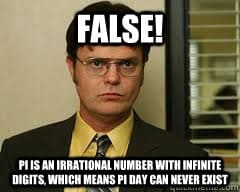Learner-Centered Tip of the Week: Exceeding is More Work
CompetencyWorks Blog
This post originally appeared on Courtney Belolan’s website on February 15, 2017. Belolan is the instructional coach for RSU2 in Maine.
When working in a learner-centered proficiency based system, it is really important that members of the learning community have some common understandings. I can’t think of any place where this is more important than with proficiency expectations. We’ve spent a good deal of time working on learning targets and assessments, and much of that work has focused on score 3 and foundational elements. It is equally important that we spend some time building common understandings about what it means to work a score 4, or exceeding levels of targets.
One of the most common mental wrestlings around the score 4 I hear from people sounds something like this:
“A score 4 is not supposed to be more work, so then what does exceeding look like?”
This points to some confusion around what a score 4 actually is. And as we all know, if one person has the question chances are many others do to. So let’s take a look at some important features of score 4 work. We will use the following example to work through three important features:

-

Dwight Schrute on Pi Day Exceeding IS More Work: The part missing from the statement above about score 4 is that a score 4 is not more work at the same reasoning level. A score 4 for any learning target is characterized as being at a more complex reasoning level, or complicated combination of reasoning levels, than the score 3. Inherently, this means more work! In our example above, the learners need to do some writing, thinking, and possibly some research in order to make a compelling argument agreeing or disagreeing with Dwight Schrute.
- Exceeding Often Requires Learners To Apply Skills and Knowledge from Other Disciplines: Score 4 work is work that requires learners to explore ideas that are much bigger than the score 3 content. Often the only way to craft compelling score 4 work is to combine one content with another. In our example above the work becomes just as much about argument as it does about understanding rational and irrational numbers. Plus, it is, dare I say, interesting and amusing. This does not mean that the learner is necessarily doing score 4 work in the additional content, and it certainly could be used as evidence towards the score 3 in that content. So learners presenting the Dwight Schrute Pi Day argument could log more evidence towards proficiency in argument writing.
- Exceeding Happens Now: Many times the score 4 task is an additional question, or set of questions, on a test. Other times it is “extra” work that learners have the option to do once they finish all the same score 3 work that everybody else does. Certainly there are times when either of these approaches could work; they shouldn’t be the norm, however. Instead, a learner should begin working on the score 4 as soon as there is evidence that they are proficient with the score 3. The score 4 work should be happening and available at the same time as all the other work related to the target. If a learner shows evidence of proficiency with the target right off the bat, put them to work on the score 4! Look at the example above again. Picture a pair, or group, of learners working on that task during math class then presenting their arguments to the class once they are polished.
See also:
- Learner-Centered Tip of the Week: Grouping is a Strategy, Not the Goal
- Learner-Centered Tip of the Week: Supporting Learners with Common Language
- Learner-Centered Tip of the Week: Revisiting the Vision
Courtney Belolan works at RSU 2 in Maine where she supports K-12 teachers with performance-based, individualized learning. Courtney works closely with teams and teachers as a coach, and with the school and district leadership teams as an instructional strategist. Courtney has worked as a 6-12 literacy and instructional coach, a middle level ELA teacher, an environmental educator, and a digital literacy coach. Her core beliefs include the idea that the best education is one centered on student passions and rooted in interdisciplinary applications, and that enjoying learning is just as important as the learning itself.